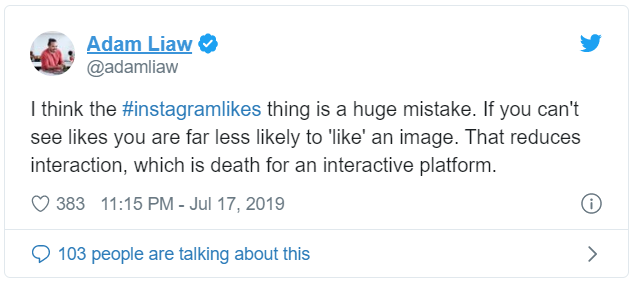Brands and influencers are trying to answer the ‘what now?’ question plaguing everyone since Instagram announced the platform would test removing the public display of likes in the U.S. For brands using likes as a key metric to measure campaign performance, this is concerning news. But, it’s not all doom and gloom.
Brands working with influencers should recognize that there’s more to the success of an influencer campaign than just likes. At gen.video, we help brands leverage content beyond just fleeting in-feed exposure so they can use it on their website, social platforms, in ads, and on their ecommerce product pages. Getting the most out of your influencers’ Instagram content is a crucial part of every campaign we run and we’ve seen firsthand the proven impact on sales and engagement when influencer content is leveraged to its full potential.
This new change from Instagram presents an opportunity for brands to evaluate their influencer strategies and develop plans that yield the most value and retail impact from their influencers.
What exactly is the ‘like ban?’
Instagram announced earlier this year that the company would test removing the public display of likes to “support mental health and encourage connection rather than scorekeeping.”
The ban has already been tested in other countries including Australia, Canada, and Japan. While users will still be able to see like counts on the back end, they will no longer be visible to their followers.
Instagram’s CEO spoke recently about Instagram’s growing interest in shopping, and how it can provide new revenue streams to influencers – perhaps as a way to assuage emerging concerns related to the effects of the ‘like ban.’

What this means for influencer marketing
While many brands use likes, comments, and shares to measure the engagement rate and success of their campaigns, perhaps Instagram hiding likes will inspire brands and creators to focus not on quick like-generating content but more interactive, fun, and creative content that inspires conversation and action.
For influencers looking to capture brands’ attention, they may need to start highlighting their audience demographics and geographic information to potential brand partners.
Perhaps we’ll see more of a focus on IGTV and Instagram Story content as a result of the change. Brands may choose to ditch Instagram altogether and lean more heavily on social platforms like YouTube, TikTok, and Twitch.
Without the pressure of likes, brands and influencers could shift focus to other metrics such as comments, saves, video/Stories views, follower growth patterns, and sales conversions. Now, more than ever brands will need to use a data-driven analytics platform that provides conversion metrics and attribution reporting to measure the success of their influencer campaigns.

Change is nothing new
Shifts in the social media influencer landscape are nothing new and to be expected in this ever evolving industry. It will be up to brands and influencers to adapt to these changes and develop new strategies and approaches that strengthen the content being created.
